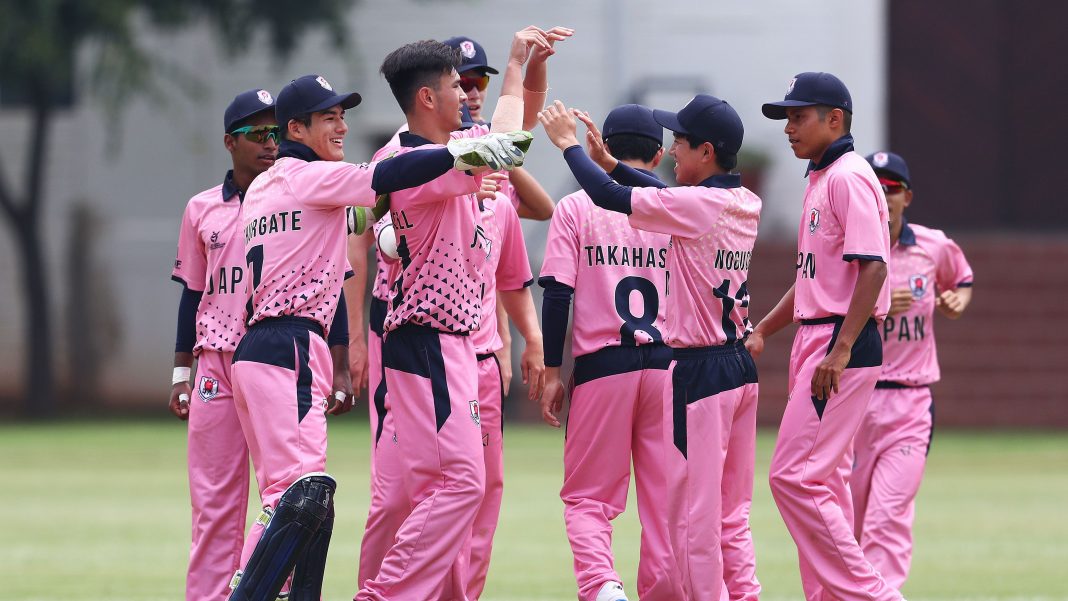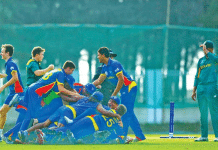You have two options.
You could live in the neon-lit Tokyo, where a robot can make you an Instagramable tuna maki.
Or you could choose Sano, a city (barely) that boasts one outlet mall and one temple, neither of which has a Wikipedia page.
If you chose Tokyo, don’t worry. You’re not alone.
Over the last two decades, thousands of former Sano residents have opted for the nation’s capital over the quaint lifestyle of their nondescript hometown.

In an effort to curb depopulation, regional bodies in Sano—prompted by the Japan Cricket Association—have opted to position themselves as Japan’s cricketing capital.
The Sano International Cricket Ground—the first venue in the country to meet ICC standards—was opened in 2016.
A year later, the JCA held a summer camp for age group cricketers at the SICG, where the talent on show was encouraging enough for them to set up their first ever U19 team with a view towards qualifying for the 2022 U19 World Cup.
Ambitious?
Apparently not.
After finishing first in the 2019 East Asia-Pacific Qualifiers—albeit with the help of PNG forfeiting a de facto final after 10 of their players were suspended for shoplifting—Japan made it through to the 2020 U19 Cricket World Cup, a remarkable 2 years ahead of schedule.
And they will soon find themselves competing in Group A against Sri Lanka, New Zealand and, most notably, a blockbuster Indian team boasting players who’ve already picked up IPL contracts.
Squad
Max Clements, Tushar Chaturvedi, Neel Date, Kento Ota-Dobell, Ishaan Fartyal, Sora Ichiki, Leon Mehlig, Masato Morita, Shu Noguchi, Yugandhar Retharekar, Debashish Sahoo, Reiji Suto, Kazumasa Takahashi, Ashley Thurgate & Marcus Thurgate (Captain)
Players to Watch
Marcus Thurgate
He keeps wicket, he’s Japan’s star batsman and—just for good measure—he will be rocking the captain’s armband in South Africa.
Thurgate was the top-scorer from all sides at the EAP Qualifiers with 2 half-centuries in 3 innings. Japan’s reliance on their skipper is best highlighted by how they lost their last ten wickets for 24 runs in their first warm-up fixture against Scotland after Thurgate was dismissed for 33.
Make no mistake: Japan’s chances of batting 50 overs will rest heavily on the shoulders of their best player.

Kazumasa Takahashi
As a genuine all-rounder, who opens the bowling and bats in the middle-order, Kazumasa Takahashi’s form will be crucial to Japan’s prospects throughout the tournament.
In addition to topping the run charts in the Japan Under 19 League, he was the only player other than skipper Thurgate to register a half-century for Japan at the EAP Qualifiers. With the ball, his accuracy and ability to execute an impressive yorker earned him 6 wickets at an average of just 6.00 as he finished as Japan’s second-highest wicket-taker.
READ MORE: The ICC is sitting on a 300 million person cricket revolution ahead of this month’s U19 World Cup
Yugandhar Retharekar
The off-spinner may have just turned 16, but he sure knows how to kick it with the big boys. Yugandhar Retharekar finished as the most economical bowler in Division 1 of Japan’s Senior Cricket League, conceding a miserly 3.01 RP) for his 14 wickets.
He carried this form into the EAP Qualifiers, where he was Japan’s top wicket-taker with 8 wickets at a stunning average of 4.25.
Along with Takahashi, he will form the bowling core of the team and will be one for opposition batsmen to watch out for when the ball gets older.
Tournament Prospects
It would take a miracle for the Japanese to get one over a full member, but targets such as batting out their 50-over allotment and bowling a team out are certainly within reach for a team whose stronger suit appears to be their bowling.

More important, however, is the potential for cricket’s growth in a country with a population of 126 million. JCA CEO Naoki Alex Miyaji estimates that more than half of all school children in Sano’s 28 schools have played cricket at least once. With the ability to showcase their skills to a large global TV audience for the first time ever, Japan’s teenage underdogs can inspire a new generation of fans beyond Sano and it’s surrounding areas, adding to Japan’s pool of 3000 active cricketers.
When you consider the rapid growth of the sport in the country and the fact that many of the current squad—including Takahashi and Retharekar—will be eligible for the next edition of the U19 World Cup in two years time, the future of the sport looks bright in the Land of the Rising Sun.
18th Jan 2019: Japan U19 vs New Zealand U19 @North West University Oval, Potchefstroom
21st Jan 2019: Japan U19 vs India U19 @Mangaung Oval, Bloemfontein (TV game)
25th Jan 2019: Japan U19 vs Sri Lanka U19 @North West University Oval, Potchefstroom








Do they have broadcast of the event in Japan ? If not then they need to do something because if its on TV, it will make an impact for sure.